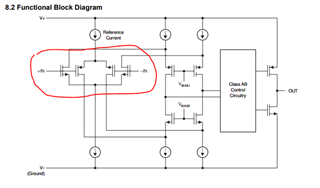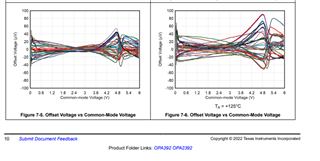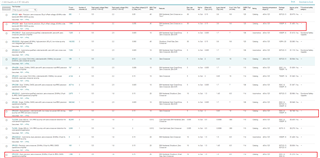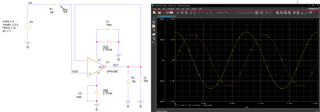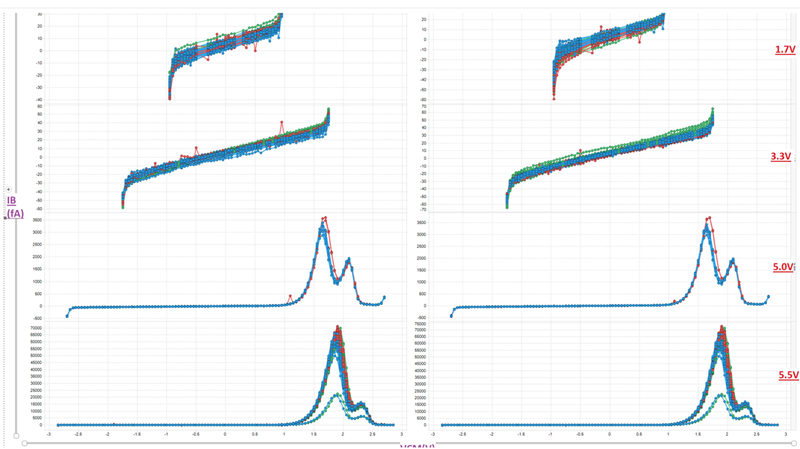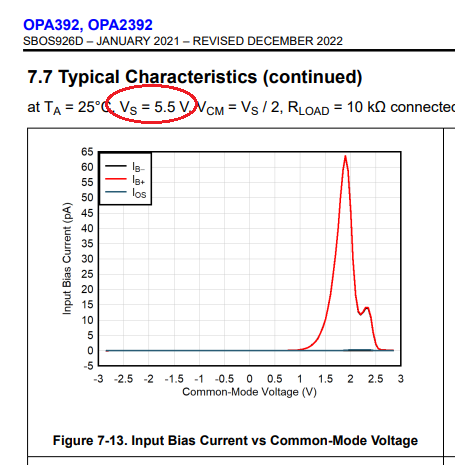Other Parts Discussed in Thread: OPA2322, OPA2320, , OPA2328
Hello,
When looking at the Input Bias current vs Common mode voltage graphs, the third graph, which I assume is missing the Vs=5.5V marking has a very nasty increase between 1V and 2.5V. Can you tell me if this chart is accurate? It seems odd that additional supply voltage would create such a high input bias current (> 60 PicoAmps) when compared to the Vs=1.7 and Vs=3.3V graphs (30-40 FemtoAmps).
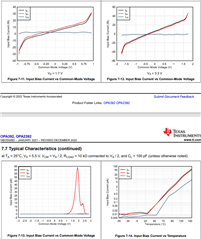
Thank You,
Ben


